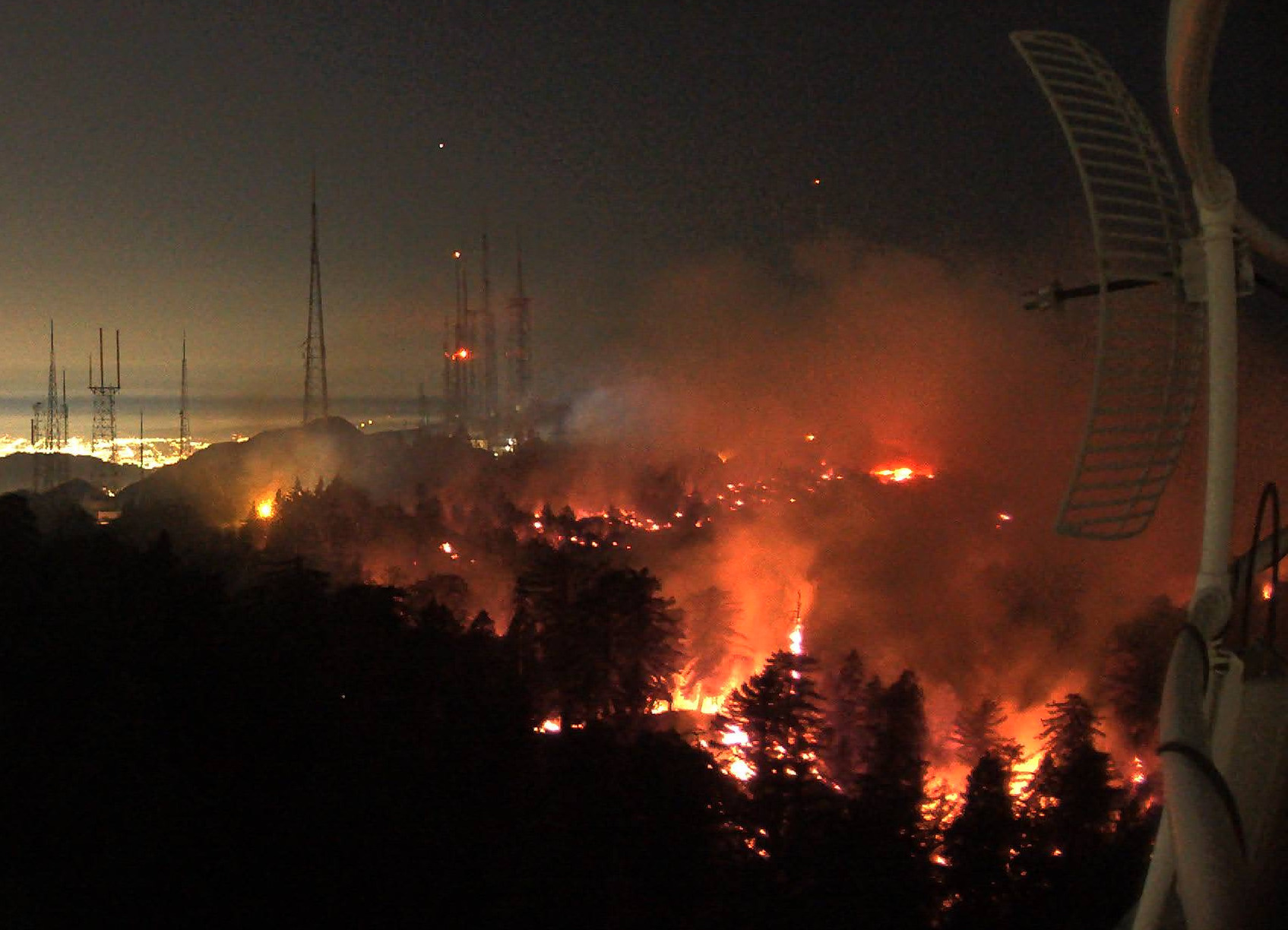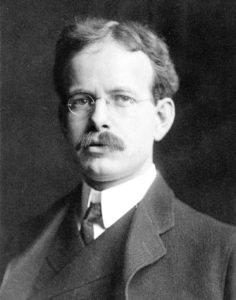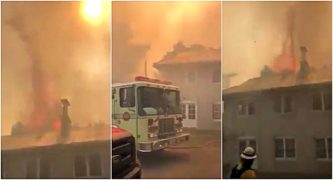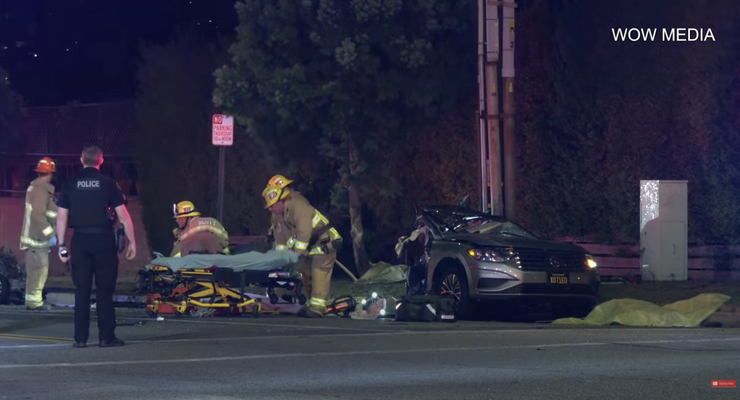The above video of the Bobcat Fire at Mt. Wilson was, incredibly, blended and stitched together from approximately 86,000 images taken from the HPWREN cameras atop Mt. Wilson. It was published on YouTube by Siobhán Dougall.
On Sept. 14, Sam Hale, chair and CEO of the Mt. Wilson Observatory Board of Trustees, penned what many people thought was a goodbye letter as the Bobcat Fire moved dangerously close to the historic facility.
But after a prolonged battle, firefighters were able to save the observatory. On Monday, Hale, grandson of George Ellery Hale, the man who built the observatory, told Pasadena Now the fire actually came much closer than many may have thought to the famed mountaintop structures.
“We were scared to death,” said Hale, whose grandfather was the leader or key figure in the planning or construction of several world-leading telescopes, including the 60-inch Hale reflecting telescope and the 100-inch Hooker reflecting telescope at Mt. Wilson.

“This is the third fire in the last 11 years,” said Hale. “We had the Station Fire in 2009, which was almost as apocalyptic as this one almost was. And we had one in 2017, which wasn’t near as big, but it was scary. And then this one, of course, threatened us, got within 500 feet on the east side, and got within about 20 feet of the mountaintop on the south side. So it was dicey.”
Firefighters set backfires to remove potential fuel for the fire and carved out a containment line after flames came within 500 feet of the landmark facility.
Firefighters set backfires to stop the spread or change the direction of the wildfire. This is done by burning the brush toward which the fire is headed so it has nothing to consume when it reaches that point.
On Tuesday, the 178-square mile Bobcat Fire was more than 60 percent contained.
Had the observatory or the area it occupies been consumed by flames, it could have been devastating on several fronts. For starters, there are nine radio transmitters at Mt. Wilson, and 24 TV station transmitters, including L.A.’s network stations CBS, ABC and NBC. Pasadena-based KPCC 89.3 FM also has a transmitter on the mountain.
In 2009, the threat posed by the Station Fire was so imminent that officials with KCET-TV announced that the public television station could lose its signal if the towers were engulfed by flames. Announcers on KRTH-101 announced that the popular mainstream music FM radio station might have to fall back on a 5,000-watt transmitter, which would have limited the span of its signal. The fire also threatened to overrun cellphone towers on the mountain and disrupt service.
During that historic blaze, crews worked around the clock day to protect the facility from the fire’s destructive path, coating the complex with 750 pounds of fire-resistant foam. The observatory recently took precautions to prepare for another fire on the mountain.
We were asked many times: "How close did the fire get?" We have the answer. (Video from SEP 17) Damage: Smoke and soot inside upper story of The Monastery but otherwise unscathed. How these heroic firefighters managed to save the building is incredible! #bobcatfire pic.twitter.com/Qt3nGbRG68
— Mount Wilson Observatory (@MtWilsonObs) September 29, 2020
“Three years ago, we worked with Los Angeles County to refurbish a 500,000-gallon reservoir, which is in addition to two others through a family foundation,” Hale said. “Just this summer, we finished replacing all of our major fire hydrants. We were absolutely ready to go. The firefighters who were up there were absolutely beyond magnificent. They were so fabulous. They were dazzled about how much water we had up on the mountain and how organized it was.”
Since the observatory was saved, a Gofundme page was started to raise $1 million to renovate some of the historic buildings, upgrade and expand public facilities, and continue to grow educational and cultural programming.
“I’ll tell you one upside is we realized what Mt. Wilson means to the community at the foot of the mountain in the Los Angeles basin, but also what it means to the country and the world,” Hale said. “The outreach we had from all over the world was just incredible.
“We know how important Mt. Wilson is to the history of astronomy. It is the pivotal point in modern astronomy. Modern astronomy happened on that mountain. The world knows about it and they supported us. They came out. We were just flooded with emails and posts on Facebook. So it was very heartwarming and that’s why we jumped right on a campaign to raise some money.”
The pandemic has forced the observatory, which should have opened in early April, to remain closed this season.

The historic observatory was founded in 1904 by Hale’s grandfather, George Ellery Hale, who moved a telescope from Wisconsin to the mountain to continue his studies of the sun.
Today, the observatory houses the 100-inch Hooker Telescope, which was the largest aperture telescope in the world from 1917 to 1949 and helped Edwin Hubble discover that the universe was still expanding, which aided in the development of the Big Bang Theory.
The 60-inch Hale telescope at the facility was the largest operational telescope in the world when it was completed in 1908.
The complex also houses research facilities for UCLA, USC and other educational institutions.
“There is something incredibly magic about the place, not the least of which is when you realize that a few miles away from the hustle and bustle and chaos and jangle of the Los Angeles Basin is this incredibly peaceful, serene, woodland area that’s dotted with all of these incredible observatories, whether they be solar observatories or observatories to look at the stars,” Hale said.
“It is a place of incredible beauty and quiet and of science. And so we’re expanding from science into education and in the culture and into lectures and concerts. So we just continue to expand what we do.”














 0 comments
0 comments



